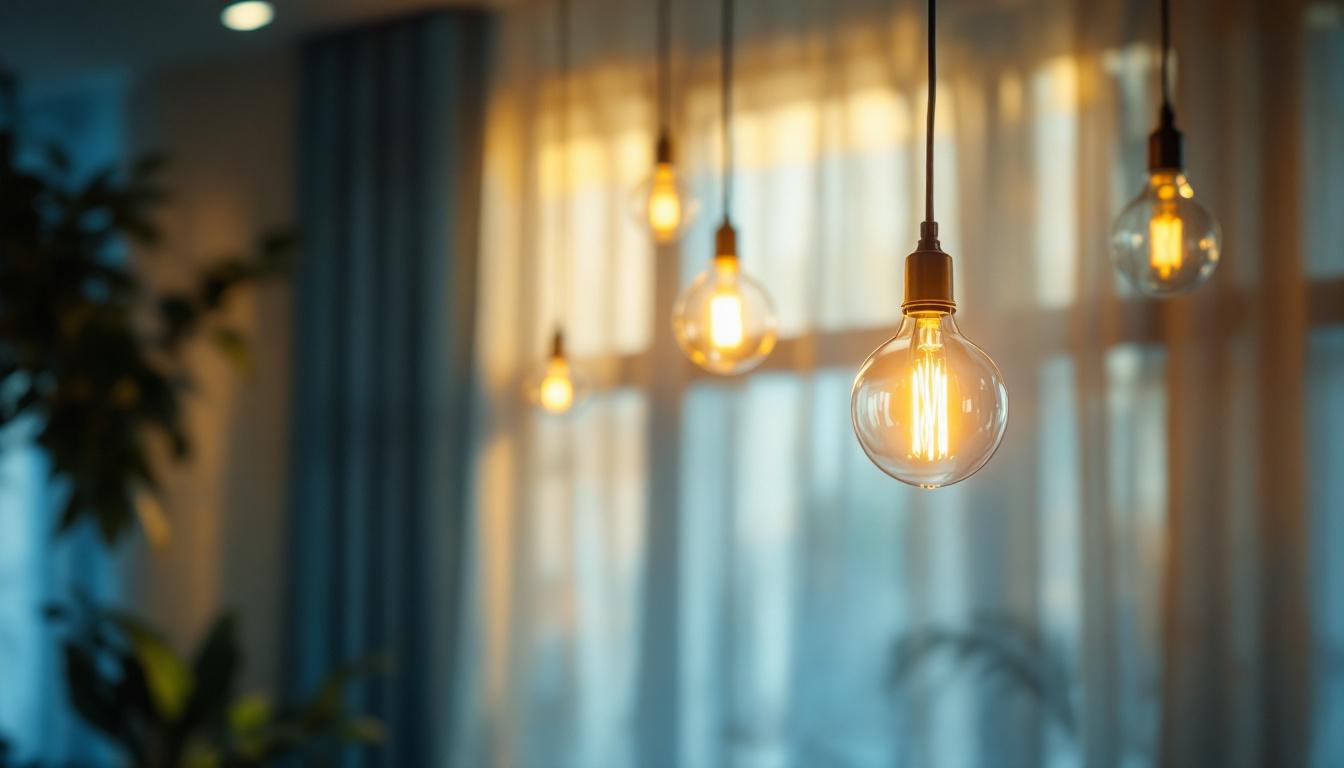
Pendant lights are a versatile and stylish option for illuminating spaces in both residential and commercial settings. Their unique designs and functionality can enhance the aesthetic appeal of any room while providing focused lighting where it is needed most. For lighting contractors, understanding the various aspects of pendant lighting is essential to meet client needs and preferences effectively. This article delves into everything you need to know about pendant lights, from types and designs to installation and maintenance.
Pendant lights are fixtures that hang from the ceiling, typically suspended by a cord, chain, or rod. They come in various styles, shapes, and sizes, making them suitable for different applications. Whether used in kitchens, dining areas, or commercial spaces, pendant lights can serve both functional and decorative purposes. Their versatility allows them to be used as task lighting over kitchen islands, ambient lighting in living rooms, or even as focal points in entryways, enhancing the overall aesthetic of the space.
There are several types of pendant lights, each designed for specific applications and aesthetics. Understanding these types can help contractors recommend the best options for their clients. Additionally, the choice of pendant light can influence the mood and functionality of a room, making it essential to consider the intended use when selecting fixtures.
The design of pendant lights can significantly impact the overall ambiance of a space. Various styles cater to diverse tastes and interior designs:
In addition to these styles, pendant lights can also be customized with different finishes, colors, and bulb types, allowing homeowners to tailor their lighting choices to fit their unique preferences. For example, a bold color can make a striking statement in a neutral room, while a soft, muted finish can create a warm and inviting atmosphere. Furthermore, the advent of LED technology has made it easier than ever to find energy-efficient options that do not compromise on style or brightness, making pendant lights an even more appealing choice for modern homes.
Selecting the appropriate pendant light involves considering various factors, including the space’s purpose, size, and existing decor. Here are some key considerations for lighting contractors when advising clients:
The first step in choosing a pendant light is to assess the space where it will be installed. Consider the room’s size, ceiling height, and existing lighting. For example, a large dining area may benefit from a multi-light pendant, while a small kitchen nook might only require a single pendant.
Understanding the intended use of the pendant light is crucial. Will it serve as primary lighting, or is it meant to provide accent or task lighting? For instance, pendant lights above a kitchen island should provide ample illumination for food preparation, while those in a living room may serve more decorative purposes.
Lastly, the pendant light should complement the room’s existing decor. Consider the color scheme, materials, and overall style of the space. A modern pendant light may clash with a traditional interior, so finding a harmonious balance is essential for a cohesive look.
Proper installation of pendant lights is vital to ensure safety and functionality. Lighting contractors should be well-versed in the following aspects of installation:
The height at which a pendant light is hung can significantly affect its performance and aesthetic appeal. A general rule of thumb is to hang pendant lights 30 to 36 inches above a dining table or kitchen island. However, this can vary based on the ceiling height and the size of the pendant. In spaces with higher ceilings, consider using longer cords or chains to create visual interest.
Before installation, ensure that the electrical wiring is adequate for the pendant light being installed. Check the wattage requirements and ensure that the circuit can handle the load. Additionally, consider using a dimmer switch for added versatility, allowing clients to adjust the brightness according to their needs.
Properly securing the pendant light is crucial for safety. Ensure that the mounting bracket is securely attached to a ceiling joist or a suitable support structure. Follow the manufacturer’s instructions for installation, and always double-check connections before finalizing the installation.
To keep pendant lights looking their best and functioning efficiently, regular maintenance is essential. Here are some tips for contractors to share with clients:
Dust and grime can accumulate on pendant lights over time, dulling their appearance. Depending on the materials used, cleaning methods may vary. For glass shades, a gentle glass cleaner and a soft cloth can restore shine. Metal fixtures may require a damp cloth and mild soap, while fabric shades should be vacuumed gently to remove dust.
Regularly checking and replacing bulbs is crucial for maintaining optimal lighting. Encourage clients to use the recommended bulb type and wattage for their pendant lights. LED bulbs are a popular choice due to their energy efficiency and longevity, making them an excellent option for pendant lighting.
Periodic inspections of the electrical components are essential for safety. Look for signs of wear or damage, such as frayed wires or loose connections. If any issues are detected, recommend professional assistance to address them promptly.
The world of pendant lighting is constantly evolving, with new trends emerging regularly. Staying updated on these trends can help lighting contractors provide fresh and innovative options to their clients.
As sustainability becomes increasingly important, many manufacturers are creating eco-friendly pendant lights using recycled materials or energy-efficient technologies. These designs not only reduce environmental impact but also appeal to eco-conscious consumers.
Smart home technology is making its way into pendant lighting, allowing users to control their lights remotely via smartphone apps or voice commands. These innovative designs offer convenience and flexibility, making them an attractive option for modern homes.
Another trend gaining popularity is the mixing and matching of pendant light styles. Combining different designs can create a unique and personalized look, allowing homeowners to express their individuality. Contractors can encourage clients to experiment with various shapes, colors, and materials for a more eclectic aesthetic.
When it comes to pendant lighting, there are several common mistakes that contractors should be aware of to avoid potential issues:
One of the most significant mistakes is not considering the scale of the pendant light in relation to the space. A large pendant in a small room can overwhelm the area, while a tiny pendant in a spacious room may get lost. Always assess the proportions before making a selection.
Another common oversight is failing to address the specific lighting needs of the space. Pendant lights should provide adequate illumination for their intended purpose. For example, task lighting above a kitchen island should be bright enough for food preparation, while ambient lighting in a living room should create a warm and inviting atmosphere.
Lastly, ignoring electrical safety can lead to hazardous situations. Always ensure that the installation meets local electrical codes and that the wiring is appropriate for the fixture. If in doubt, consulting a licensed electrician is advisable.
Pendant lights are a dynamic and stylish lighting solution that can enhance any space. For lighting contractors, understanding the various types, styles, and installation techniques is essential for providing clients with the best options. By considering factors such as space, functionality, and decor, contractors can guide their clients in selecting the perfect pendant lights. Additionally, staying informed about trends and common mistakes can help ensure successful installations and satisfied customers.
As the demand for innovative lighting solutions continues to grow, pendant lights will remain a popular choice for both residential and commercial applications. By mastering the intricacies of pendant lighting, contractors can position themselves as experts in the field, ready to illuminate spaces with creativity and professionalism.
Ready to elevate your lighting projects with the finest pendant lights on the market? Look no further than LumenWholesale. We provide lighting contractors with an exceptional range of high-quality, specification-grade lighting products at prices that can’t be beaten. Our commitment to bypassing the middleman means you enjoy substantial savings, ensuring you get the best value for your investment. With our expansive selection that meets rigorous industry standards, you can trust that your lighting solutions will be as reliable as they are striking. Plus, with the convenience of free shipping on bulk orders, you can stock up on premium lighting effortlessly and economically. Don’t settle for less — choose LumenWholesale for quality, affordability, and convenience. Wholesale Lighting at the Best Value is just a click away.

Discover how partnering with lighting contractors for growing lights can revolutionize your vegetable business.

Discover the innovative strategies lighting contractors use to integrate T12 fluorescent bulbs into modern projects.

Discover how motion sensor garage lights are revolutionizing the lighting industry with their energy efficiency, convenience, and enhanced security features.

Discover the key differences between shunted and non-shunted sockets and explore innovative hacks that smart lighting contractors can use to optimize installations.